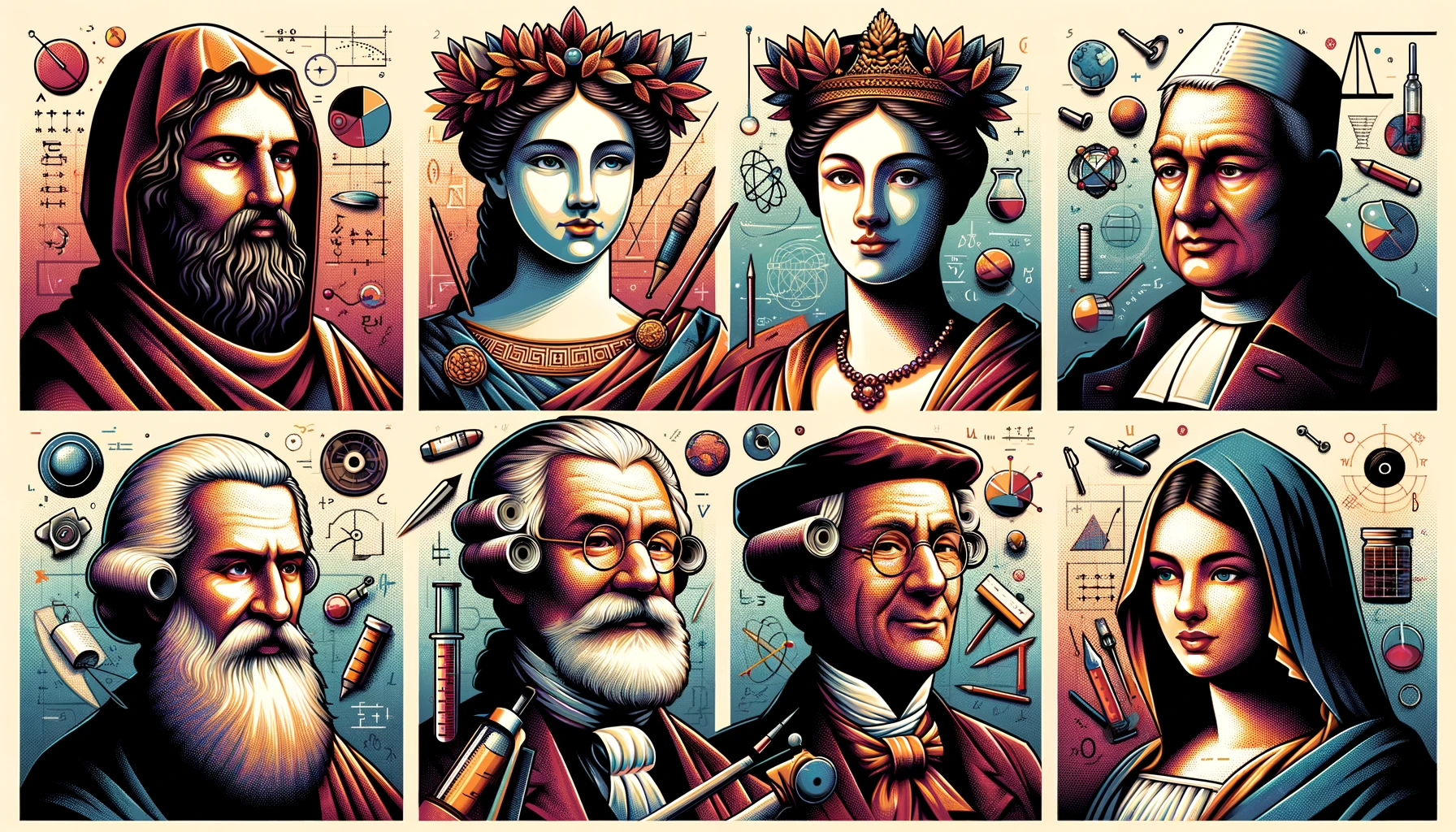The tapestry of nobility is woven with many titles, each carrying its history, power, and prestige. Among these, the ranks of Viscount and Duke stand out, both steeped in the rich traditions of European aristocracy. In this article, ‘Nobility Rundown: Viscount vs Duke, What Sets Them Apart?’, we explore the intricate distinctions between these two noble titles, exploring their origins, roles, and enduring significance in the modern world. We unravel the threads that distinguish a Viscount from a Duke through historical anecdotes, societal roles, and political influence.
Key Takeaways
- Viscounts and Dukes are noble titles with distinct origins and meanings, reflecting their unique positions within the feudal hierarchy.
- The roles and powers of Viscounts and Dukes have evolved, with each rank having specific responsibilities and levels of influence.
- While the prevalence of these titles has diminished, they continue to hold ceremonial significance and social prestige in contemporary society.
- Economic and political implications of being a Viscount or Duke were historically significant, involving land ownership, taxation, and royal favoritism.
- Notable historical figures who held these titles have shaped history through their contributions, political maneuvers, and, at times, their involvement in scandals.
Historical Context of Nobility Titles

The Evolution of Nobility in Medieval Europe
The medieval period witnessed a significant transformation in the structure of European society, with the emergence of nobility titles as a defining feature of the social hierarchy. The concentration of wealth and power in the hands of a small elite class shaped the evolution of nobility. This elite class, often bolstered by military conquests and the strategic use of coinage, laid the groundwork for the feudal system that would dominate Europe for centuries.
The Roman influence in Britain, for instance, introduced monetary systems and trade opportunities that benefited a select few, leading to increased wealth and prestige. However, for the vast majority, life remained a struggle for subsistence. The disparity between the elite and the common people was stark, and it was within this context that the nobility’s titles began to take on greater significance.
The scarcity of liquid assets among the populace posed challenges for monarchs who relied on taxation to fund their reigns and wars. Kings like Henry I found themselves in dire financial straits, necessitating innovative approaches to taxation and revenue generation.
As the concept of nobility evolved, so too did the titles associated with it. Each title carried its own set of powers, responsibilities, and social expectations, which were often closely tied to land ownership and economic influence. The titles of Viscount and Duke, for example, emerged from this complex tapestry of medieval power dynamics.
The Role of Coinage and Wealth in Establishing Nobility
The consolidation of wealth and the advent of coinage played pivotal roles in the formation of the nobility class. Coinage served not only as a medium of exchange but also as a symbol of power and influence. Kings and rulers used coins as a form of propaganda, imprinting their visages and emblems to assert dominance and broadcast their reign. The scarcity of liquid assets among the general populace often led to difficulties in tax collection, which in turn affected the nobility’s ability to maintain their estates and armies.
The emergence of coinage in England can be traced back to King Offa of Mercia, whose high-quality silver pennies bore not only his image but also that of his wife, Cynethrith. This act of including a queen on currency was unprecedented in Anglo-Saxon England and underscored the intertwining of wealth, power, and nobility.
The distribution of wealth became increasingly concentrated, with a small elite class emerging as the primary holders of riches. This economic stratification was instrumental in establishing the hierarchical structure of nobility, where titles were often correlated with one’s wealth and ability to contribute to the crown’s needs.
The Influence of Military Conquests on Noble Titles
Military conquests have historically played a pivotal role in shaping the hierarchy and distribution of noble titles. The Hundred Years’ War, for instance, was a significant conflict that influenced the nobility structure in both England and France. The war led to shifts in power, land ownership, and the creation or elevation of titles as rewards for loyalty and military service.
During times of war, titles were often granted to those who demonstrated valor or strategic brilliance on the battlefield. These titles came with lands and privileges that increased the holder’s wealth and influence. As a result, military success could rapidly elevate a noble’s status and power within the kingdom.
The aftermath of military conquests often necessitated the restructuring of noble hierarchies to reflect the new balance of power.
The following list outlines how military achievements could affect a noble’s title and status:
- Acquisition of new lands and territories
- Recognition and reward for military service
- Increase in wealth and resources
- Enhancement of political influence and alliances
- Potential for title elevation or creation of new titles
Distinguishing Ranks: Viscount and Duke

Origins and Meanings of Viscount and Duke
The titles of Viscount and Duke carry with them a rich tapestry of history and significance. Dukes, positioned at the pinnacle of nobility just below the monarch, often governed large swaths of territory and wielded considerable influence. The term ‘Duke’ is derived from the Latin ‘dux’, meaning ‘leader’, and was traditionally granted to high-ranking military commanders or rulers of significant provinces.
In contrast, the title of Viscount is of a somewhat lesser stature, ranking below a Duke. Originating from the Latin ‘vice comes’, meaning ‘deputy count’, Viscounts often served as the lieutenants or representatives of counts or higher-ranking nobles, overseeing smaller regions or administrative areas. The role of a Viscount could vary greatly, but it was typically associated with judicial and administrative duties within their domain.
The hierarchy of nobility titles reflects the structured nature of medieval society, with each rank carrying specific duties and privileges.
The distinction between these titles is not merely ceremonial; it is deeply rooted in the feudal system that structured medieval European society. While Dukes often had vassals of their own and commanded great respect and resources, Viscounts were more directly involved in the day-to-day governance of their territories.
Comparative Powers and Responsibilities
The titles of Viscount and Duke carry with them distinct powers and responsibilities that have evolved. Dukes, being higher in the hierarchy of nobility, traditionally held more power and larger landholdings than Viscounts. They were often key military leaders and held significant sway over regional politics. Viscounts, on the other hand, served as deputies to earls or directly to the monarch in regions where no earl was appointed, managing affairs and maintaining the crown’s interests in their respective territories.
While the Duke’s role was more expansive and influential, the Viscount’s position was integral in the local governance and administration of justice.
In terms of responsibilities, Dukes were expected to mobilize troops and protect the realm, while Viscounts focused on the administration of law and order. The table below outlines some of the key differences in their roles:
| Rank | Land Ownership | Military Role | Administrative Duties |
|---|---|---|---|
| Duke | Extensive estates | Command armies | Regional governance |
| Viscount | Smaller domains | Raise local militias | Judicial oversight |
Despite the historical significance of these roles, the modern era has seen a shift, with many of the practical powers being absorbed by state institutions, leaving the titles largely ceremonial.
Prevalence and Significance in Modern Times
While the pomp and circumstance of nobility may seem a relic of the past, titles such as viscount and duke still carry weight in contemporary society. These hereditary titles, often seen as symbolic, continue to be passed down through family lines, maintaining a connection to historical traditions and societal structures.
In modern times, the prevalence of these titles varies greatly by country. In some nations, the title of duke or viscount is purely ceremonial, with no legislative power or governmental responsibility. However, in others, they may still hold a degree of influence, particularly in social and cultural spheres.
- United Kingdom: A significant number of hereditary peers, including dukes and viscounts, retain ceremonial roles and may be called upon for various state functions.
- France: The use of noble titles is legally recognized, but they do not confer any legal privileges or responsibilities.
- Spain: Titles of nobility are recognized and can be inherited or granted by the monarch, though they carry no governmental authority.
The enduring presence of noble titles in modern society reflects a fascination with tradition and heritage, even as the practical functions of these roles have evolved or diminished over time.
Ceremonial and Social Functions

The Role in Royal Courts and High Society
In the intricate tapestry of royal courts and high society, viscounts and dukes played pivotal roles that extended beyond their titles. Viscounts often served as the eyes and ears of the monarchy, bridging the gap between the sovereign and the lesser nobility. Their presence at court was not merely ornamental but a testament to their influence and the trust placed in them by the crown.
Dukes, on the other hand, were among the highest-ranking nobles and commanded great respect in social circles. Their proximity to the throne often translated into significant ceremonial duties, from organizing grand state events to representing the monarchy at international functions. The social calendar of a duke was a whirlwind of balls, banquets, and high-profile gatherings, reflecting their status at the apex of the noble hierarchy.
- Viscounts: Trusted intermediaries in royal affairs
- Dukes: Prominent figures in state ceremonies and international representation
The role of nobility in court and society was not just about prestige; it was a complex web of duties, expectations, and unwritten rules that dictated the rhythm of high society and the functioning of the royal court.
Ceremonial Duties and Privileges
The ceremonial roles of viscounts and dukes are steeped in tradition, reflecting their historical significance within the nobility. Viscounts and dukes often preside over formal events, lending an air of gravitas and continuity to state functions. Their presence at such events is not merely symbolic; they may also have specific duties to perform, such as presenting awards or officiating at regional ceremonies.
- Viscounts typically have a role in local ceremonies, often related to the regions from which their titles originate.
- Dukes, holding a higher rank, are frequently involved in national events and may even participate in state affairs of greater importance.
The privileges associated with these roles are considerable, including precedence at official functions and, historically, a voice in the governance of the realm.
While the practical powers of nobility have diminished over time, the ceremonial aspects remain a vibrant part of the cultural heritage. These duties and privileges underscore the enduring legacy of the nobility in shaping national identity and preserving historical customs.
Social Expectations and Lifestyle of Viscounts and Dukes
The social fabric of the nobility was tightly woven with expectations and lifestyles that set the aristocracy apart from commoners. Viscounts and dukes, though both prestigious, navigated different social terrains. Viscounts, often closer to the gentry, had to balance their noble status with more frequent interactions with those outside the noble class. Dukes, on the other hand, were the epitome of high society, commanding respect and often holding significant influence in royal courts.
The lifestyle of a duke was one of opulence and grandeur, with vast estates to manage and social events to preside over. Viscounts, while also living comfortably, had a more modest approach to their noble duties and social engagements.
The expectations placed upon these nobles were not just of a social nature but also extended to their familial and public roles. Dukes were expected to marry within their rank and contribute to the lineage of the nobility, while viscounts, though also adhering to this norm, had slightly more leeway in their alliances. Both ranks had to ensure the continuation of their legacy through careful management of their estates and strategic marriages.
- Dukes often held grand balls and state functions, setting trends in fashion and etiquette.
- Viscounts, while participating in high society, also engaged with local communities, often acting as patrons of the arts or local charities.
- The daily life of a duke was marked by a series of rituals and ceremonies, reflecting their status at the pinnacle of the nobility.
- Viscounts, though also bound by tradition, had a more accessible lifestyle, allowing them to bridge the gap between the nobility and the common people.
Economic and Political Implications

Land Ownership and Economic Influence
The economic power of nobility has always been closely tied to land ownership. Historically, the possession of vast estates was not only a symbol of wealth but also a source of economic influence and political leverage. Nobles, including viscounts and dukes, exercised control over the land and its resources, which in turn allowed them to wield significant power within the feudal system.
- Land ownership provided nobles with the means to generate revenue through agriculture, trade, and the collection of rents.
- It also established a social hierarchy, with those owning more land often holding higher status and influence.
- The management of these estates required a network of vassals and serfs, creating a complex socio-economic structure.
The intricate relationship between land, wealth, and power underscores the importance of nobility in shaping the economic landscape of their times. The ability to influence local economies and politics through landholdings was a defining characteristic of the noble class.
The transition from feudalism to more centralized forms of government saw a shift in how land was managed and wealth was accumulated. Nonetheless, the echoes of this historical paradigm continue to resonate in the way modern aristocracy is perceived and the remnants of their influence on contemporary society.
Political Leverage and Royal Favoritism
The interplay between nobility and royalty has always been a delicate dance of power and favor. Nobles wielded significant political leverage, often through their vast estates and the loyalty of their tenants. This influence was not just local but could extend to the royal court, where favoritism played a crucial role. A monarch’s favor could elevate a noble’s status, grant them access to lucrative positions, or even sway decisions of national importance.
The dynamics of royal favoritism were complex and could be influenced by a variety of factors, from personal relationships to strategic marriages.
The relationship between King Charles II and his parliament exemplifies the political machinations of the time. Charles II’s reliance on parliamentary grants, coupled with his secret dealings with France, underscored the precarious balance between royal authority and noble power. The financial struggles of the crown, exacerbated by events like the Great Plague and the Great Fire of London, further complicated this relationship.
Taxation and Revenue Generation in Noble Estates
The economic prowess of nobility was not just a matter of land ownership but also hinged on their ability to generate revenue through taxation. Nobles were often granted the right to collect taxes within their domains, which provided a significant source of income. This system, however, was not without its challenges. For instance, the general shortage of ready cash among the populace often made tax collection difficult.
Henry I of England devised an innovative solution to track tax payments using Tally Sticks. Taxpayers would pay their dues in halves, twice a year, and the amount was recorded on a split piece of willow wood, with both parts marked with identical notches. The longer piece, or ‘stock’, was kept by the payer, while the ‘foil’ remained with the exchequer. This method allowed for a form of early ‘stock’ trading, where taxes could be sold at a discount for quick cash, especially useful in times of war.
The intricate relationship between nobility and taxation was a balancing act of maintaining wealth and appeasing the governed. The Crown’s reliance on nobles for tax revenue often led to a complex interplay of power and economic strategy.
The following table illustrates the fluctuating tax revenue from noble estates during the reign of a hypothetical monarch, showcasing the impact of external factors such as war and famine on the nobility’s financial responsibilities:
| Year | Tax Revenue | Notable Events |
|---|---|---|
| 1340 | £5,000 | War Campaign |
| 1341 | £3,000 | Famine |
| 1342 | £4,500 | Peace Treaty |
| 1343 | £2,500 | Plague Outbreak |
This table exemplifies how external events could drastically affect the economic stability of noble estates and, by extension, the Crown’s finances.
Notable Historical Figures

Famous Viscounts and Their Contributions
The nobility has always been a tapestry of remarkable individuals, each contributing to the fabric of history in their own unique way. Among them, Viscounts have played pivotal roles, often overshadowed by their higher-ranking peers. Garnet Wolseley, 1st Viscount Wolseley, was a British field marshal whose military prowess and dedication to modernizing the British Army left an indelible mark on military history.
In the realm of governance and societal influence, Viscount Cobham, known as Charles Lyttelton, made a significant impact on New Zealand. His tenure as the 9th Governor General of New Zealand and his contributions to the country’s development are still remembered today.
The contributions of Viscounts to various fields, be it military, governance, or social welfare, have been substantial and deserve recognition.
While not all Viscounts may have names that resonate through history, their actions and legacies often speak volumes. From the strategic planning of settlements to the unexpected tales of vicars and lions, the stories of Viscounts are as diverse as they are fascinating.
Dukes Who Shaped History
Throughout history, dukes have often been pivotal figures in shaping the course of nations and empires. Their influence extended beyond mere titles, impacting politics, culture, and warfare.
- William the Conqueror, Duke of Normandy, changed the course of English history with the Norman Conquest of 1066.
- Francis of France, Duke of Guise, played a crucial role in the French Wars of Religion in the 16th century.
- John Churchill, the 1st Duke of Marlborough, was a key military leader during the War of the Spanish Succession.
The legacy of these dukes is a testament to the significant role that individual nobles could play in the broader historical narrative.
The ducal title often came with substantial land holdings and military responsibilities, which in turn provided the power to influence national policies and international relations. The actions and decisions of these nobles were not just footnotes in history books; they were the forces that drove the grand events of their times.
Infamous Nobles and Scandals
The annals of nobility are not without their dark chapters, where the allure of power often intersected with the nefarious. Scandals have perennially surfaced, shaking the foundations of high society and leaving a stain on the legacies of various noble houses.
One such scandal was the Affair of the Poisons, which implicated members of the French court in a series of crimes involving witchcraft and murder during the reign of Louis XIV. The inquiry into these events revealed a web of intrigue that extended from the nobles to the common people.
Another infamous case involved a supposed Nazi spy ring in the Midlands, rumored to be led by a noblewoman who was an occultist and a spy known as ‘Clarabella’. The story shrouded in mystery and espionage, was leaked to the newspapers in 1958 by a whistleblower named Anna of Claverley.
While many nobles have left their mark on history through valor and leadership, others have become notorious for their involvement in plots and scandals that have rocked their nations.
These episodes serve as a reminder that nobility is not a shield against moral fallibility and that the actions of a few can cast long shadows over the many.
Conclusion: The Distinctive Hierarchies of Viscounts and Dukes
In the intricate tapestry of nobility, viscounts and dukes hold their unique threads of power and prestige. Throughout history, these titles have not only signified social status but also carried with them specific duties, privileges, and expectations. Viscounts often served as the administrative lieutenants of dukes or as regional authorities, while dukes stood among the highest ranks of the nobility, wielding considerable influence and often governing vast swaths of land. The distinction between a viscount and a duke is emblematic of the layered nature of aristocratic hierarchy, reflecting the complex interplay of lineage, land, and loyalty that has shaped the political and social landscapes of monarchies. As we have explored, the roles and responsibilities associated with these noble titles have evolved, yet their enduring legacy continues to captivate the imagination and curiosity of those fascinated by the pageantry of the past.
Frequently Asked Questions
What are the main differences between a Viscount and a Duke?
The main differences between a Viscount and a Duke lie in their rank and the extent of their powers. A Duke is a higher rank than a Viscount and typically has greater land ownership, more political influence, and a closer relationship with the monarchy. Dukes often have larger territories to manage and may have more ceremonial and social responsibilities.
How did military conquests influence noble titles?
Military conquests played a significant role in the establishment and elevation of noble titles. Victorious leaders would often grant titles and lands to their loyal followers as a reward for their service in battle. These titles could be elevated or expanded upon further military successes, leading to a hierarchy of nobility that reflected one’s military contributions.
What role did coinage play in establishing nobility?
Coinage served as a form of propaganda for kings and a symbol of their power, which helped establish and reinforce the social hierarchy. By controlling the minting and distribution of coins, monarchs could display their wealth and influence, and this wealth was often concentrated among a small elite class, which included the nobility.
What are the ceremonial duties of Viscounts and Dukes?
Ceremonial duties of Viscounts and Dukes can include attending the royal court, participating in state functions, and performing specific roles during ceremonies. They may also be involved in the organization of social events, act as patrons for various causes, and represent the monarchy in their respective regions.
How did economic factors like taxation and revenue generation affect nobles?
Economic factors such as taxation and revenue generation were crucial for nobles to maintain their estates and political power. They needed to manage their lands effectively to generate income, often through taxes, to support their lifestyle, fund military campaigns, and fulfill their obligations to the crown.
Who were some notable Viscounts and Dukes in history?
Notable Viscounts and Dukes in history include figures like Viscount Nelson, known for his naval victories, and Duke William the Conqueror, who became King of England after the Battle of Hastings. History is also marked by infamous nobles who were involved in scandals or controversial events.




